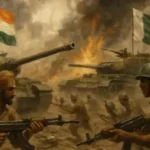Introduction
April 13, 1975, marks a day of national trauma for Lebanon. Known as “Black Sunday,” it was the spark that ignited a 15-year civil war. While the immediate bloodshed ended decades ago, the legacy of this conflict continues to cast a long shadow over Lebanon’s political and social landscape. In this article, we explore five enduring consequences of Lebanon’s civil war, fifty years after it began.
1. Sectarian Power-Sharing Remains Entrenched
The Taif Agreement of 1989, which ended the civil war, formalized Lebanon’s confessional political system. Power is distributed among religious groups—Maronite Christians, Sunni Muslims, Shiite Muslims, and Druze—each granted specific roles in government. While intended to prevent further conflict, this structure often paralyzes governance and fosters patronage rather than meritocracy.
2. Collective Memory Still Divides Communities
There is still no consensus on the events of April 13, 1975. The shooting of Maronite Christians by Palestinian gunmen in Ain El-Remmaneh and the retaliatory massacre of Palestinian civilians later that day remain contested in public discourse. Different sectarian groups tell different versions of the same history, reinforcing division rather than reconciliation.
3. Militia Culture Influences Modern Politics
Many political figures today emerged from former wartime militias. Their roots in violence and sectarian loyalty continue to shape policy and rhetoric. The normalization of these leaders in public life makes it difficult to promote a post-war, civic national identity. The ghosts of the civil war are not in history books—they sit in parliament.
4. Refugee Tensions Mirror Pre-War Fractures
The presence of Palestinian refugees in 1975 contributed to civil war tensions. Today, Lebanon hosts a large population of Syrian refugees, stirring similar fears and political disputes. As in the past, fragile state infrastructure and limited resources amplify grievances, raising concerns about history repeating itself.
5. National Identity Crisis Persists
As historian Kamal Salibi noted in A House of Many Mansions, creating a country is different from creating a nationality. Lebanon’s fragmented identity—torn between East and West, Christian and Muslim, Arab and Mediterranean—remains unresolved. Until a cohesive national narrative is embraced, the divisions of the past will linger.
Conclusion
Fifty years on, Lebanon is still in many ways a nation at war with its past. The political structures, social divisions, and historical narratives rooted in the civil war continue to shape daily life. Understanding the unresolved legacies of 1975 is essential to building a more unified and peaceful Lebanon.
For more on post-conflict societies, check out our related piece: Why Sectarian Politics Still Divide Iraq.









